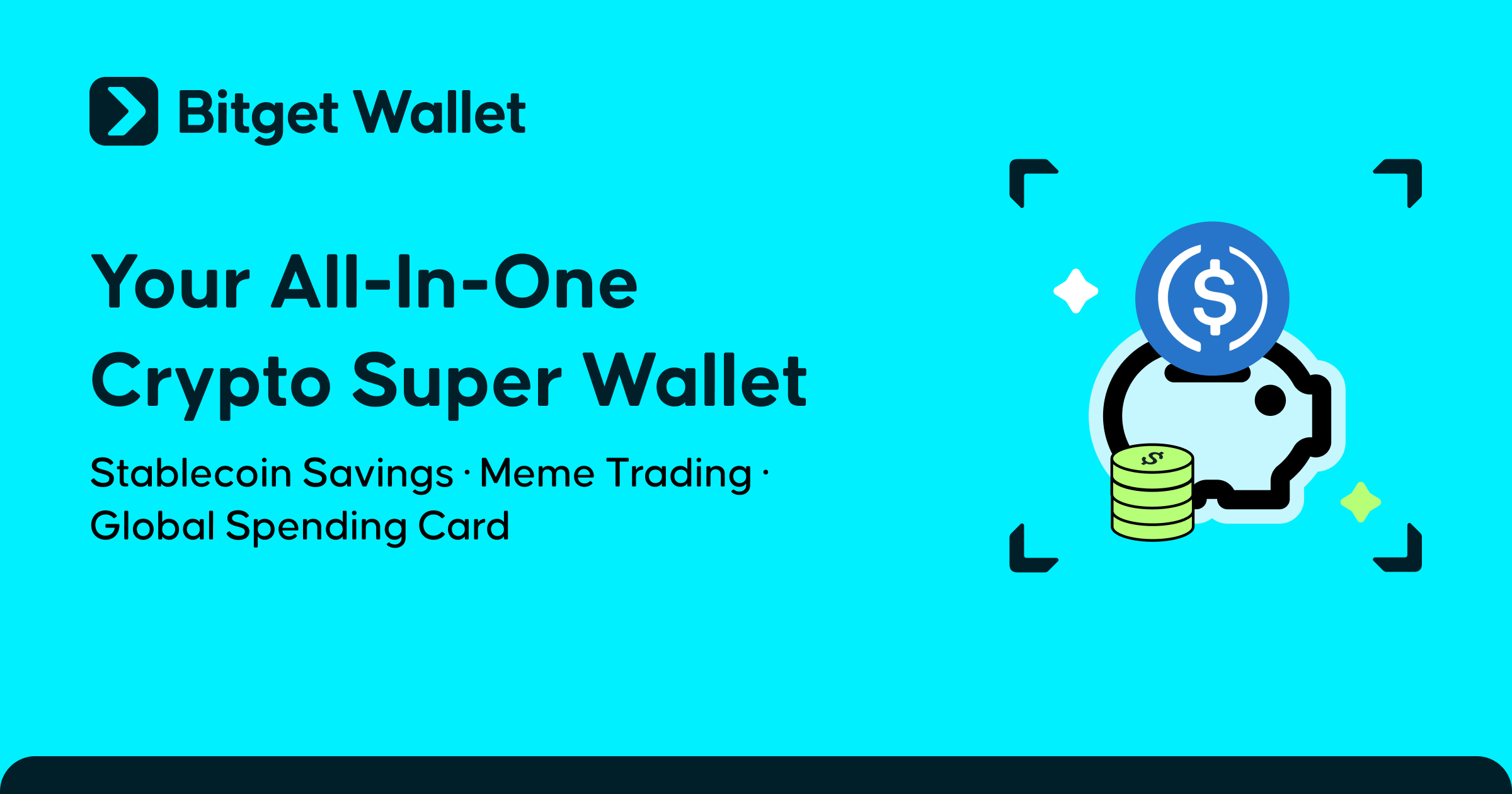Japanese Crypto Glossary: The Complete Guide to Key Cryptocurrency Terms in Japan
Introducing the Japanese Crypto Glossary, which aims to introduce readers to important crypto and blockchain terminology that is shaping Japan's rapidly evolving decentralized finance landscape. As a significant global innovator in Web3, becoming familiar with Japanese terminology, including DeFi (分散型金融), NFT (非代替性トークン), stablecoins, or any government-endorsed blockchain project that uses cryptocurrency, is important for developers and investors alike.
This guide to Japanese crypto terms is organized alphabetically in the Japanese syllabary あ行 (a-column) and then to the Latin English alphabet A–Z. It is designed to be easy to read and understandable for non-Japanese audiences who want to know about the language Japanese users use regarding their thoughts and interactions with digital assets. Whether you are an investigator of regulatory terms like 暗号資産 (crypto asset) or into the market slang of ガチホ (HODL), this glossary will provide you with an accessible and organized way for beginning to learn and understand both Japanese and global crypto language.
By the end of this list, you will have not only vocabulary understanding but also context for why Japan’s Financial Services Agency (FSA) matters for Web3 and how together these policies influence the language of blockchain and its adoption. Pay close attention to the section you select as you begin to decode the language of Japan’s crypto economy—and use what you discover in conjunction with Bitget Wallet, an application that is introducing you to the world of Japan’s digital assets economy.
Key Takeaways
- Understand Japan’s crypto and blockchain terminology from A–Z and あ行–ら行.
- Learn why 暗号資産 (crypto asset) differs from “cryptocurrency” in legal contexts.
- Discover how Japan’s Web3 movement and regulation influence crypto culture and language.
What Is the Japanese Crypto Glossary and Why Does It Matter?
The Japanese Crypto Glossary is a comprehensive educational resource compiling key terms that define Japan’s cryptocurrency ecosystem. Unlike most global glossaries, it reflects Japan’s regulatory, linguistic, and cultural context, helping readers interpret how crypto is discussed and understood domestically.
For instance, Japan’s Financial Services Agency (FSA) officially replaced the term cryptocurrency with 暗号資産 (crypto asset) to align digital tokens with financial-instrument classifications under local law. This distinction matters: while “cryptocurrency” implies an independent currency, “crypto asset” emphasizes ownership, taxation, and investor protection—core priorities in Japan’s compliance-focused ecosystem.
Because of this, Japanese crypto language often includes unique terms and abbreviations not found elsewhere. Examples like 草コイン (kusa coin), meaning “low-value coin,” or イナゴ, referring to traders who jump on short-term trends, reflect the blend of finance and internet culture that defines Japan’s Web3 scene.
Understanding these crypto terms in Japanese offers more than translation—it unlocks how Japanese traders, developers, and policymakers perceive blockchain innovation. As Japan advances its Web3 promotion strategy, recognizing these terms will help global audiences follow updates from the FSA, stablecoin issuers, and major blockchain projects based in Tokyo and beyond.
A-Section (あ行)
The A-section of the Japanese Crypto Glossary introduces some of the most widely used crypto and blockchain words in Japan. Many of these originate from regulatory and technical contexts, reflecting Japan’s compliance-driven approach to digital assets.
| Japanese Term | Romaji / English Equivalent | Meaning / Explanation |
| 暗号資産 | Angō-shisan (Crypto Asset) | The official legal term used by Japan’s FSA instead of “cryptocurrency.” It refers to digital tokens with transferable value. |
| アドレス | Adoresu (Address) | A crypto wallet’s unique identifier used for sending or receiving digital assets. Similar to an account number. |
| イーサリアム | Īsariamu (Ethereum) | One of the most used blockchains in Japan, powering NFTs, DeFi, and smart contracts. |
| エアドロップ | Eadoroppu (Airdrop) | The distribution of free tokens to users, often for marketing or user-engagement campaigns. |
| アービトラージ | Ābiturāji (Arbitrage) | A trading strategy exploiting price differences across exchanges to make profit. |
Ka-Section (か行)
The Ka-Section (か行) of the Japanese Crypto Glossary covers some of the most widely used crypto and blockchain expressions that begin with “ka,” “ki,” “ku,” “ke,” and “ko.” These terms often relate to technical systems, governance structures, and key organizations shaping Japan’s Web3 and crypto ecosystem. Understanding this section helps readers grasp how crypto terms are adapted linguistically and conceptually for the Japanese market.
| Japanese Term | Romaji (Reading) | English Meaning / Description |
| 仮想通貨 | Kasō tsūka | “Virtual currency.” The former legal term for cryptocurrency in Japan, replaced by 暗号資産 (crypto asset) under FSA regulations in 2019. |
| カストディ | Kasutodi | Custody. Refers to the safekeeping of digital assets, often managed by licensed custodians or exchanges under Japan’s regulatory framework. |
| カンファレンス | Kanfarensu | Conference. Used for major Web3 and blockchain events held in Japan, such as WebX and IVS Crypto. |
| 規制 | Kisei | Regulation. Refers to Japan’s Financial Services Agency (FSA) guidelines governing crypto exchanges, stablecoins, and token issuance. |
| 記録台帳 | Kiroku daichō | Ledger. A digital or distributed system used to record transactions on the blockchain. |
| クジラ | Kujira | “Whale.” A large crypto holder or investor whose trades can influence market prices. |
| クラウドファンディング | Kuraudofandingu | Crowdfunding. A blockchain-related financing model where projects raise capital through token sales or community funding. |
| クレジットスコア | Kurejitto sukōa | Credit score. In DeFi, often refers to on-chain identity or reputation systems used for lending and borrowing. |
| コインチェック | Koinchekku | Coincheck. One of Japan’s leading licensed crypto exchanges, known for its early role in the domestic market. |
| コールドウォレット | Kōrudo woretto | Cold wallet. An offline storage device for crypto assets, enhancing security against online attacks. |
| コントラクト | Kontorakuto | Smart contract. A self-executing blockchain program that automates transactions based on coded conditions. |
Sa-Section (さ行)
The Sa-Section (さ行) of the Japanese Crypto Glossary introduces terms commonly used in DeFi, trading, and blockchain governance. Many of these words reflect how Japan’s crypto community interprets global blockchain concepts through local language, balancing innovation with regulation. These expressions are essential for understanding Japan’s approach to safe and transparent crypto operations.
| Japanese Term | Romaji (Reading) | English Meaning / Description |
| 最終的受益者 | Saishūteki juekisha | Ultimate Beneficial Owner (UBO). The real individual who ultimately owns or controls a crypto account or wallet—important for compliance checks. |
| サイドチェーン | Saido chēn | Sidechain. A secondary blockchain connected to a main chain, enabling scalability and faster transactions. |
| サトシ | Satoshi | The smallest unit of Bitcoin (0.00000001 BTC), named after Bitcoin’s creator, Satoshi Nakamoto. |
| サービスプロバイダー | Sābisu purobaidā | Service provider. Refers to entities like exchanges, wallet providers, or payment gateways in Japan’s crypto ecosystem. |
| 参加者 | Sankasha | Participant. A user or node participating in a blockchain network’s operations or governance. |
| 三井住友銀行 | Mitsui Sumitomo Ginkō | Sumitomo Mitsui Bank. One of Japan’s largest banks exploring blockchain-based financial services and stablecoin pilots. |
| 残高 | Zandaka | Balance. Represents the amount of crypto held in a wallet or account. |
| サブネット | Sabunetto | Subnet. A partitioned network layer that enhances scalability and security in blockchain architecture. |
| サプライ | Sapurai | Supply. Refers to the total or circulating number of tokens in a crypto project. |
| 取引所 | Sābisukō | Exchange. A licensed platform for buying, selling, and trading cryptocurrencies in Japan. (Note: Japanese term often written as 取引所 – Torihikijo.) |
| ステーキング | Sutēkingu | Staking. Locking crypto assets to support network security and earn rewards. Common in PoS blockchains like Ethereum and Solana. |
Ta-Section (た行)
The Ta-Section (た行) of the Japanese Crypto Glossary covers terms frequently used in trading, decentralized finance, and blockchain governance. Understanding these terms is crucial for both beginners and experienced users looking to navigate Japan’s unique crypto landscape. Many of these words relate to transactions, token behavior, and network activities.
| Japanese Term | Romaji (Reading) | English Meaning / Description |
| ターゲット価格 | Tāgetto kakaku | Target price. The price level a trader aims to reach when buying or selling a cryptocurrency. |
| タイムスタンプ | Taimu sutanpu | Timestamp. Records the exact time a transaction was processed on the blockchain. |
| タスク | Tasuku | Task. Refers to specific actions or jobs within decentralized applications (DApps) or blockchain networks. |
| 単一署名 | Tan’itsu shomei | Single signature. A wallet or transaction authorization requiring only one private key. |
| 担保 | Tanpo | Collateral. Assets locked to secure a loan or lending position in DeFi protocols. |
| 短期取引 | Tanki torihiki | Short-term trading. Buying and selling crypto within a short period to capture price movements. |
| ターゲットユーザー | Tāgetto yūzā | Target user. Specific demographic or type of investor a crypto project aims to serve. |
| タップルート | Tappurūto | Taproot. A Bitcoin network upgrade improving privacy, scalability, and smart contract functionality. |
| ダブルスパンド | Daburu supando | Double-spend. The attempt to spend the same cryptocurrency twice, prevented by blockchain consensus mechanisms. |
| ターゲットマーケット | Tāgetto māketto | Target market. The intended audience or geographic market for a crypto project or token launch. |
| ターゲットチェーン | Tāgetto chēn | Target chain. The blockchain network on which a token or smart contract is deployed. |
Na-Section (な行)
The Na-Section (な行) of the Japanese Crypto Glossary includes terms often used in network operations, token management, and NFT projects. These words help Japanese crypto users understand key concepts in blockchain infrastructure and decentralized ecosystems.
| Japanese Term | Romaji (Reading) | English Meaning / Description |
| ナンス | Nansu | Nonce. A number used once in cryptographic transactions to prevent double-spending and ensure transaction uniqueness. |
| ナビゲーション | Nabigēshon | Navigation. Refers to tools or interfaces for exploring blockchain networks or DApps. |
| ナレッジベース | Narejji bēsu | Knowledge base. A centralized repository of information about crypto projects, protocols, or technical guides. |
| ナイーブ | Naību | Naive. Refers to simple or beginner-level approaches to blockchain or trading, often contrasted with advanced strategies. |
| ナノコントローラー | Nano kontorōrā | Nano controller. Small-scale hardware device for secure crypto key storage or IoT blockchain integration. |
| ナレッジトークン | Narejji tōkun | Knowledge token. Tokens representing access to educational content, voting rights, or intellectual property in blockchain projects. |
| ナッジ | Nadji | Nudge. A mechanism in DeFi protocols to incentivize user behavior, like staking or liquidity provision. |
| ナカモト | Nakamoto | Nakamoto. Refers to Satoshi Nakamoto, the pseudonymous creator of Bitcoin. |
| ナショナルデジタル通貨 | Nashonaru dejitaru tsūka | National digital currency. A government-issued digital currency, similar to Japan’s ongoing Digital Yen initiative. |
| ナンスリプレイ攻撃 | Nansu ripurei kōgeki | Nonce replay attack. A type of blockchain attack attempting to reuse a transaction nonce to defraud a network. |
Ha-Section (は行)
The Ha-Section (は行) covers terms frequently used in blockchain protocols, crypto trading, and NFT ecosystems. These words are essential for understanding DeFi strategies, token mechanics, and the Japanese crypto market.
| Japanese Term | Romaji (Reading) | English Meaning / Description |
| ハードフォーク | Hādo fōku | Hard fork. A major blockchain protocol update that is not backward-compatible, often creating a new chain. |
| ハッシュ | Hasshu | Hash. A cryptographic function that converts input data into a fixed-size string of characters, used for security and verification. |
| ハッシュレート | Hasshu rēto | Hash rate. The computing power used by miners to validate blockchain transactions. |
| ハッキング | Hakkkingu | Hacking. Unauthorized access or attack on blockchain networks, exchanges, or wallets. |
| ハイブリッドウォレット | Haiburiddo uoretto | Hybrid wallet. A wallet that combines features of both custodial and non-custodial wallets. |
| ハイリスク | Hai risuku | High risk. A term used to describe volatile investments, common in crypto trading. |
| ハイプサイクル | Hai pu saikuru | Hype cycle. The market phenomenon where investor enthusiasm rapidly increases and then declines. |
| ハンディング | Handingu | Handling. Refers to the process of managing crypto assets or executing transactions. |
| ハートビート | Hāto bīto | Heartbeat. A signal used in blockchain networks to indicate that nodes are online and synchronized. |
| ハッカソン | Hakkason | Hackathon. An event where developers collaborate intensively on blockchain, DeFi, or NFT projects. |
Ma-Section (ま行)
The Ma-Section (ま行) includes essential Japanese crypto terms often used in trading, blockchain technology, and NFT discussions. Understanding these words helps beginners and experienced users navigate Japan’s crypto ecosystem effectively.
| Japanese Term | Romaji (Reading) | English Meaning / Description |
| マイニング | Mainingu | Mining. The process of validating blockchain transactions and earning rewards (e.g., BTC) through computational work. |
| マイナー | Mainā | Miner. An individual or entity that performs mining on a blockchain network. |
| マルチシグ | Maruchi shigu | Multi-sig. A wallet requiring multiple private keys to authorize a transaction, enhancing security. |
| マーケットキャップ | Māketto kyappu | Market cap. The total value of a cryptocurrency, calculated as price × circulating supply. |
| マージン取引 | Mājin torihiki | Margin trading. Trading crypto with borrowed funds to amplify potential gains or losses. |
| マクロ経済 | Makuro keizai | Macroeconomics. Broader economic factors affecting crypto markets, such as interest rates or inflation. |
| マルチチェーン | Maruchi chēn | Multi-chain. A blockchain network or project that operates across multiple chains for interoperability. |
| マッチングエンジン | Matchingu enjin | Matching engine. Technology used by exchanges to match buy and sell orders efficiently. |
| マイクロペイメント | Maikuro peimento | Micropayment. Very small cryptocurrency transactions, often used for tipping or content access. |
| マネーロンダリング | Manē rondaringu | Money laundering. Illegal process of disguising crypto origins, strictly regulated under Japanese law. |
Ya-Section (や行)
The Ya-Section (や行) covers Japanese crypto terms that are less common but still important for understanding niche aspects of Japan’s blockchain and DeFi ecosystem. These words often appear in trading discussions, NFT communities, and crypto culture.
| Japanese Term | Romaji (Reading) | English Meaning / Description |
| ヤミ市場 | Yami ichiba | Black market. Informal or illegal crypto trading outside regulated exchanges, heavily monitored by Japanese authorities. |
| ヤフーファイナンス | Yafu Fainansu | Yahoo Finance (Japan). Popular platform tracking cryptocurrency prices and market news. |
| ヤーン | Yān | Yield. Returns earned on crypto assets through staking, lending, or DeFi protocols. |
| ヤクルトコイン | Yakuruto koin | Yakult Coin (example of Japanese-themed meme crypto). Reflects Japan’s emerging meme coin culture. |
| ヤンキーNFT | Yankī NFT | “Yankee” NFT. Slang used in Japanese NFT communities to describe rebellious or subculture-themed NFTs. |
Ra-Section (ら行)
The Ra-Section (ら行) highlights terms beginning with “ら” that are commonly used in Japan’s crypto and blockchain conversations. These terms often relate to trading strategies, regulations, or emerging digital assets unique to the Japanese market.
| Japanese Term | Romaji (Reading) | English Meaning / Description |
| ランディング | Randing | Lending. The act of lending crypto assets on platforms for interest, often part of DeFi strategies. |
| ライトコイン | Raitokoin | Litecoin. One of the earliest cryptocurrencies, widely traded in Japan. |
| ラップトークン | Rappu tōkun | Wrapped Token. A tokenized version of another crypto, used to trade assets across blockchains. |
| ランボルギーニ | Ranborugīni | Lamborghini. Slang in Japanese crypto culture referring to massive profits or gains from trading. |
| ランキング | Rankingu | Ranking. Frequently used to refer to token, NFT, or exchange performance charts in Japan. |
Alphabet Section (A–Z Terms)
The Alphabet Section (A–Z Terms) covers widely used crypto terminology in Japan that originates from English or global crypto culture. Many of these terms are adopted directly into Japanese conversations about blockchain, NFTs, DeFi, and trading, making them essential for beginners and enthusiasts alike.
| Term (English) | Japanese / Katakana | Description |
| Airdrop | エアドロップ | Distribution of free tokens to wallet holders as part of marketing campaigns or protocol incentives. |
| Altcoin | アルトコイン | Any cryptocurrency other than Bitcoin, often used in trading and investment discussions. |
| Blockchain | ブロックチェーン | Distributed ledger technology that underpins cryptocurrencies and DeFi applications. |
| DAO | ダオ | Decentralized Autonomous Organization, governing crypto projects collectively via smart contracts. |
| DeFi | ディーファイ | Decentralized Finance, financial services built on blockchain without intermediaries. |
| DEX | デックス | Decentralized Exchange, a platform for peer-to-peer crypto trading without central authority. |
| FOMO | フォモ | Fear Of Missing Out, the anxiety of missing a profitable trading opportunity. |
| Gas Fee | ガス代 | Transaction fee paid to execute operations on blockchains like Ethereum. |
| HODL | ホドル | A slang term for holding crypto assets long-term despite volatility. |
| NFT | エヌエフティー | Non-Fungible Token, a unique digital asset representing ownership of art, collectibles, or virtual goods. |
| Staking | ステーキング | Locking crypto assets to support network operations and earn rewards. |
| Tokenomics | トケノミクス | Economic model of a crypto token, including supply, distribution, and incentives. |
| Wallet | ウォレット | Digital software or hardware used to store, send, and receive cryptocurrencies. |
| Web3 | ウェブスリー | Next-generation internet built on blockchain, emphasizing decentralization and user ownership. |
How Is Japan’s Crypto Culture Shaping Global Adoption?
Japan has always been at the forefront of cryptocurrency and blockchain innovation. Its unique culture, language, and regulatory approach aren’t just shaping the local market—they’re influencing the global crypto community too. From slang words to technical concepts, Japanese crypto culture is spreading knowledge and ideas worldwide.
Why Are Japanese Terms Becoming Globally Recognized?
Some Japanese crypto terms, like ガチホ (Gachihold, meaning holding crypto for the long term) and イナゴ (Inago, referring to a wave of quick buying), have started appearing in international discussions. Traders and online communities on Twitter, Discord, and Telegram often use these words when talking about market trends and trading behaviors.
Beyond slang, Japan’s blockchain projects, such as Layer-2 solutions, NFT platforms, and Web3 educational programs, are drawing attention globally. Japanese developers focus heavily on security, compliance, and user experience, which sets a standard that others follow. As a result, both Japanese terminology and innovation are slowly becoming part of the global crypto conversation.
What Are the Most Searched Crypto Words in Japanese Google Trends?
Looking at search trends in Japan gives insight into which terms are trending locally and internationally. Data from CoinPost and CoinGecko Japan shows some of the most searched words:
| Term | Why It’s Popular |
| ステーブルコイン (Stablecoin) | People are looking for less volatile crypto options. |
| Web3 | Interest grows as NFTs, gaming, and DeFi expand in Japan. |
| ビットコインETF (Bitcoin ETF) | Searches spike around launches and regulatory news. |
| NFT | Collectibles, art, and metaverse projects keep it popular. |
| ステーキング (Staking) | More investors want passive income from their crypto. |
These search trends show how Japanese blockchain terms and crypto terms in Japanese are becoming more widely known. Learning them helps investors and enthusiasts understand Japan’s fast-moving crypto ecosystem and connect with global communities.
How Can Bitget Wallet Help You Explore and Learn These Japanese Crypto Terms?
Navigating Japan’s crypto scene can feel overwhelming, especially with all the unique terminology and local regulations. That’s where Bitget Wallet comes in. More than just a wallet, it’s an educational and practical tool that helps both beginners and experienced users understand, trade, and manage crypto safely.
Why Is Bitget Wallet the Best Tool to Learn, Trade, and Store Crypto in Japan?
Bitget Wallet is an all-in-one, non-custodial wallet that supports over 130 blockchains and more than 1 million tokens. Its Japanese-localized interface makes it easy for users to explore crypto safely while learning crypto terms in Japanese in real time.
Within the app, users can access a built-in Japanese crypto glossary, detailed token information, and listings of DApps available in Japan. It also supports staking (ステーキング), DEX aggregation, and NFT storage, letting users practice and apply the terms they learn directly in the wallet.
Whether you’re checking token data, exploring Japanese DeFi projects, or interacting with NFTs, Bitget Wallet provides a hands-on way to connect learning with real crypto activity. Its intuitive design, full Japanese support, and robust security make it ideal for anyone wanting to understand both the language and the mechanics of Japan’s crypto ecosystem.
Download Bitget Wallet to explore Japan’s crypto ecosystem safely and easily, and start mastering the Japanese crypto glossary today.
Conclusion
Japanese Crypto Glossary serves as an essential guide for anyone looking to understand Japan’s rapidly growing digital asset landscape. By learning local crypto terminology, users gain insight not only into Japan’s unique regulatory and cultural approach but also into the broader global crypto ecosystem. Terms like 暗号資産, ステーキング, and DEX become easier to grasp when presented in context, helping beginners and seasoned traders alike navigate the space with confidence.
With Bitget Wallet, you can put this knowledge into practice. The wallet allows you to trade, stake, and explore decentralized applications (DApps) while referencing the Japanese crypto glossary directly in the app. Its Japanese-language interface and comprehensive support for tokens and chains make it a practical tool for learning and applying crypto terms in real-world scenarios.
Take control of your crypto journey in Japan. Download Bitget Wallet today and start exploring Japan’s Web3 world in your own language.
Sign up Bitget Wallet now - grab your $2 bonus!
FAQs
What is a Japanese crypto glossary?
A Japanese crypto glossary is a curated list of cryptocurrency and blockchain terms used in Japan, including legal terms, slang, and technical jargon. It helps users understand local crypto culture and regulations.
Why should I learn crypto terms in Japanese?
Learning local terms allows you to better navigate Japanese exchanges, follow news, understand regulations, and participate in community discussions without confusion.
Can I use Bitget Wallet to practice what I learn?
Yes. Bitget Wallet supports trading, staking, DEX interaction, and NFT management, making it easy to apply Japanese crypto terms in real scenarios.
Risk Disclosure
Please be aware that cryptocurrency trading involves high market risk. Bitget Wallet is not responsible for any trading losses incurred. Always perform your own research and trade responsibly.


















